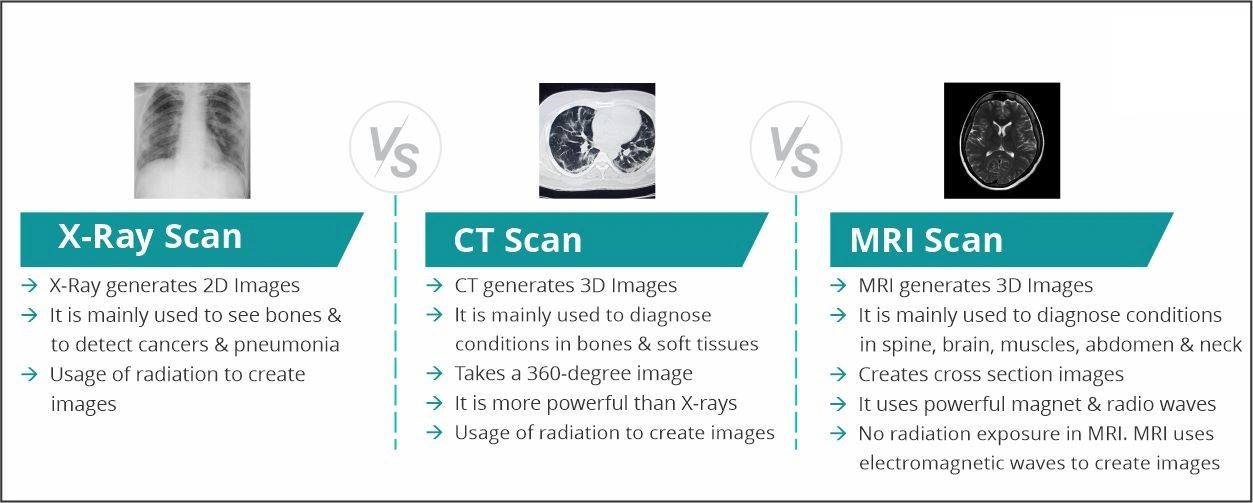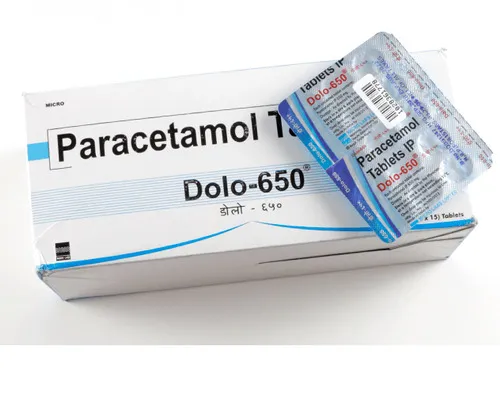MRI vs CT vs X-Ray: How These Imaging Methods Aid in Diagnosing Health Conditions
Introduction: – Medical imaging is one of the most potent weapons in contemporary medicine. It enables physicians to see inside the body without ever making an incision. Some of the most widely utilized imaging methods include MRI, CT scans, and X-rays. Each of these has a special function in diagnosing a vast array of medical conditions — from fractured bones to brain cancer.

What is an X-Ray?
X-ray (radiography) is the oldest and most widely used imaging technique. It uses a small amount of ionizing radiation to capture images of the inside of the body.

How It Works:
An X-ray machine shoots electromagnetic waves into the body. Radiating structures such as bones absorb the radiation and show up as white on the resulting picture. Softer tissues let more radiation through and appear darker.
Common Uses:
- Fractures and broken bones
- Chest conditions, e.g., pneumonia, lung infection, or tumor
- Dental checks
- Finding arthritis
- Monitoring healing of bone
Pros:
- Rapid and non-surgical
- Low-cost compared to other imaging
- Easily accessible
Cons:
- Poor detail in soft tissue
- Exposure to ionizing radiation (albeit minimal)
What is a CT scan?
CT (Computed Tomography), which is also referred to as a CAT scan, is a newer type of X-ray. It takes several X-ray photos from various angles and uses computers to make cross-sectional images of the body.

How It Works:
The patient will lie on a table that moves into a donut-shaped machine. While the scanner spins around, it takes precise slices of the body, which are then used to form 3D images.
Common Uses:
- Head injuries and strokes
- Identifying tumors or cancer
- Internal bleeding
- Lung conditions
- Spinal issues
- Causes of abdominal pain (appendicitis, kidney stones)
Advantages:
- Quick and detailed
- Suitable for emergency diagnosis
- Excellent for seeing bones, blood vessels, and soft tissues
Disadvantages:
- More radiation exposure than X-rays
- Not suitable for all patients (e.g., pregnant women)
- May need contrast dye, which can cause reactions in some individuals
What is an MRI (Magnetic Resonance Imaging)?

MRI (Magnetic Resonance Imaging) employs strong magnets and radio waves to make detailed images of organs and tissues within the body. MRI does not employ ionizing radiation like CT and X-ray.
How It Works:
The patient reclines within a large tube-shaped device. Magnetic fields and radio waves interact with hydrogen atoms in the body, and a computer analyzes the returning signals into images.
Common Uses:
- Imaging of the brain and spinal cord
- Joint and muscle injuries
- Heart and blood vessels
- Detection of tumors, particularly in soft tissue
- Multiple sclerosis and neurological disorders
Advantages:
- Superb soft tissue contrast
- No ionizing radiation
- Can detect subtle tissue differences
Disadvantages:
- Longer scan time (20–60 minutes)
- Loud and enclosed — not suitable for claustrophobic patients
- Costly
- Metal implants or devices can be hazardous
MRI vs CT vs X-Ray: When Do Doctors Use Each?
Each imaging method serves a different purpose based on what needs to be diagnosed.
| Condition | Preferred Imaging | Why |
|---|---|---|
| Bone fractures | X-ray | Fast, clear imaging of bones |
| Head trauma or stroke | CT | Quick detection of bleeding or damage |
| Soft tissue injuries (e.g., ACL tear) | MRI | Detailed view of muscles and ligaments |
| Tumors (brain, spine) | MRI | High resolution of soft tissues |
| Chest pain (suspected heart/lung issue) | CT or X-ray | Fast detection of blockages or infections |
| Chronic headaches | MRI | Rule out tumors or structural issues |
Which Scan Is the Safest?
From a radiation-exposure standpoint, MRI is the safest since it relies on no ionizing radiation. X-rays and CT scans both use radiation, though CT uses more of it. That’s why repeated CT scans are used judiciously, particularly in children or pregnant women.
Cost and Accessibility
- X-rays are cheapest and most accessible.
- CT scans are more costly and typically located in large hospitals or diagnostic centers.
- MRIs are the most costly and could involve longer appointment wait times.
Are There Any Risks?
Yes, but low.
X-rays/CT: Repeated frequent scans can raise cancer risk due to cumulative radiation exposure. Contrast dye can produce allergic reactions.
MRI: Not advisable for individuals with certain metal implants (such as pacemakers). Can cause anxiety in individuals uneasy with enclosed spaces.
Always speak with your healthcare provider about risks and benefits.
Final Thoughts
- Medical imaging is an essential component of contemporary diagnosis and treatment planning. Every scan — X-ray, CT, or MRI — has a different strength to offer:
- X-rays are ideal for rapid snapshots of bones and lungs.
- CT scans provide speed and high-level overviews of inner structures.
- MRIs are the gold standard for soft tissue studies and neurological imaging.
Recognizing the differences makes patients feel more in control and less nervous when a physician advises one of these tests.
Whether you’re presenting with a minor problem or a more severe issue, you can be confident that these imaging resources are important partners in the pursuit of correct diagnosis and successful treatment.
















Leave a Reply